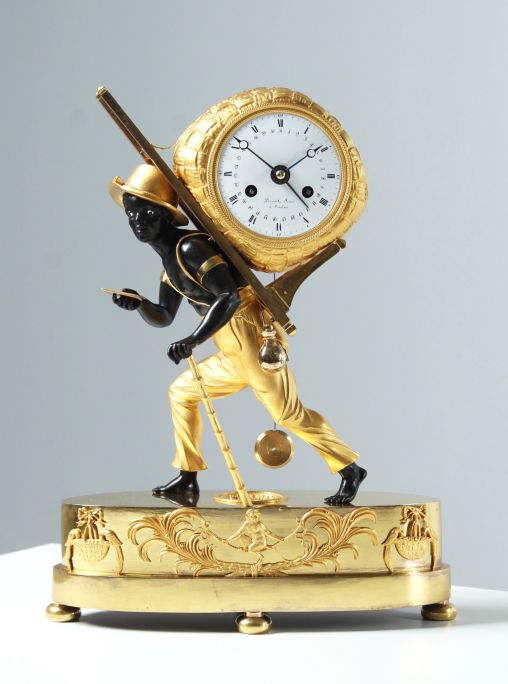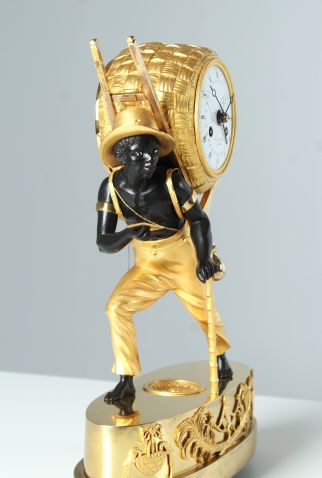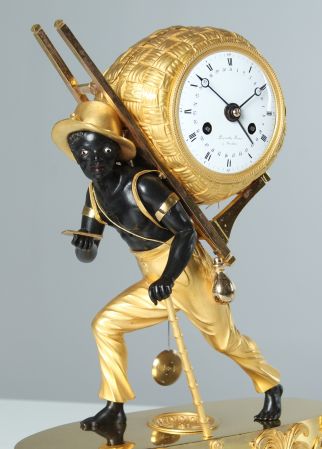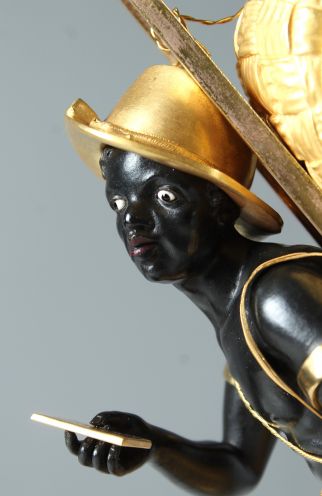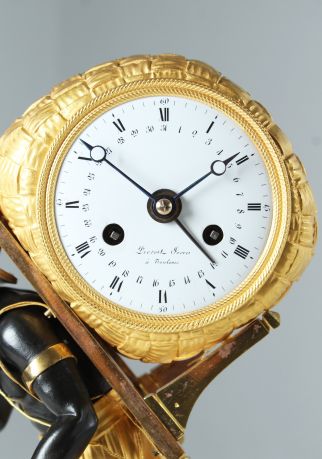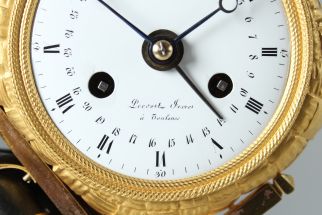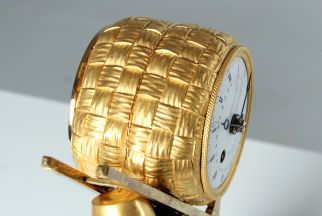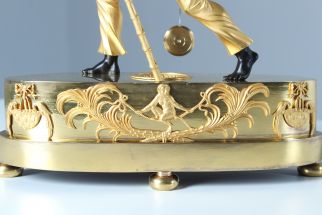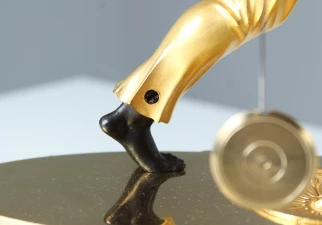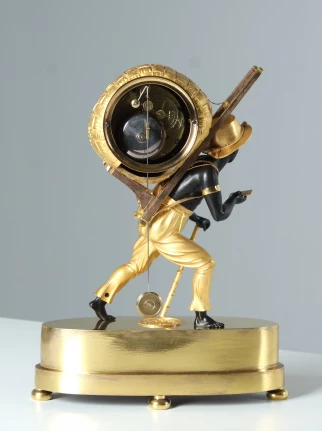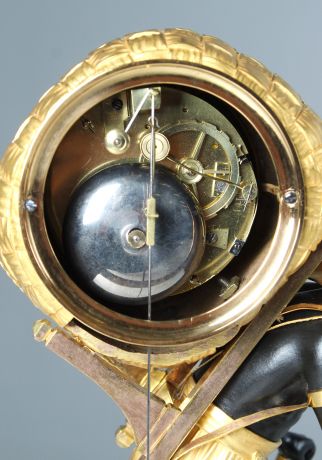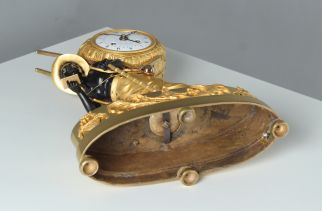Pendule "Au Negre" Portefaix
France (Toulouse)
Bronze, enamel
Empire around 1810
Dimensions: H x W x D: 36 x 28 x 11 cm
Description:
Beautiful fire-gilded and patinated bronze mantel clock from the early 19th century. Depicted is a young man carrying a large cotton parcel on his back. In his right hand he is holding a letter, with his left he is leaning on a bamboo stick. His tobacco pipe is stuck in his hat string, and he carries his water bottle on his belt.
The fire gilding contrasts interestingly with the deep black patinated bronze, and the white glass eyes are particularly striking.
The siselleur has succeeded in making materials tangible through different surface finishes. For example, the skin is discreetly hatched differently from the cotton fabric of the trousers; the bottle, bangles and pannier are polished in gold. The proportions of the figure are perfectly met, the drape on the trousers emphasises the dynamic movement.
The heart of the clock is an 8-day movement with date from the workshop of Prevost Freres which is known to have existed in Toulouse since 1809.
The Breguet hands are blued, the pendulum is suspended on a thread, as is typical of the period. The clock strikes a bell on the half and full hour.
Interesting facts:
The depiction of Le Portefaix was made by the Parisian bronze caster Jean-André Reiche, who had his artistic design registered in Paris in 1808. Besides the depiction of the cotton picker, there are numerous other pendulums dealing with the theme of colonisation. Other themes from the "new world" were also treated artistically - exotic animals and plants - butterflies, birds of paradise, tobacco and spices...
Today's viewers react to the objects with both fascination and irritation. Enthused on the one hand by the obvious quality of the richly detailed bronzes, on the other hand distanced-cautious because of the possible discrimination that is suspected behind them. The ambivalence of this feeling motivates the search for the conditions under which these pendulums came into being.
Europeans found their new ideal of the natural man primarily in fictional and realistic travelogues about the Indians of North America, the black Africans and the South Sea Islanders. Some of these works are still considered world literature today; think of Jonathan Swift's "Gulliver's Travels" (1726) or Daniel Defoe's "Robinson Crusoe" (1719).
As a sign of admiration for the exotic, the French "Au bon Sauvage" pendules are a typical feature of the Enlightenment of the late 18th century. They show the yearnings of a hitherto Europe-centred society, which was urged to look beyond its usual horizons above all by the discovery of seafaring and by the revolution of 1789.
[Source: Elke Niehüser - The French Bronze Clock pp. 140-143].
Specimens of this clock can be found in the great museums of the world, such as the Musée des Arts Décoratifs in Paris.
Condition:
Beautiful preservation of the fire gilding with rubbing on the base and the pommel.
Movement cleaned from top to bottom and in perfect working order.
Price: 12500,-€
This clock is illustrated in various reference books, including:
Giacomo et Aurélie Wannenes - Les plus belles pendules francaises p. 312
Elke Niehüser - French Bronze Clocks Fig. 240
The Prevost Freres workshop is mentioned in the following literature:
Brian Loomes - Watchmakers and Clockmakers of the World p. 628
Article found under: Clocks
Video Pendule Portefaix
Also interesting
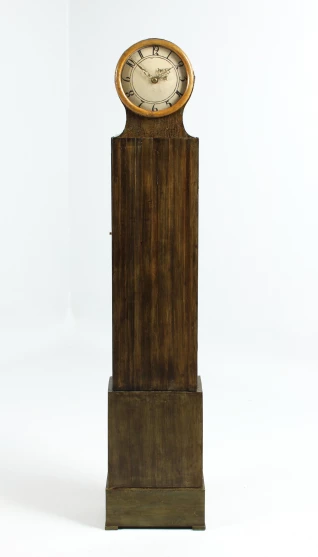
Small Scandinavian grandfather clock
Sweden
Wood, coloured
18th century

Silver Atmos clock with smoky grey dial
Switzerland
Nickel-plated brass
Year of manufacture 1973
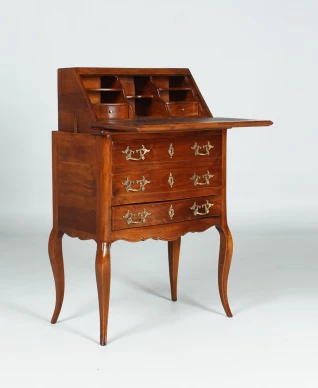
Small antique transformation table
France
Walnut
around 1860
